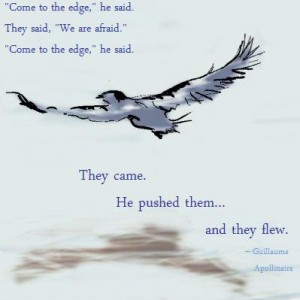You may have gleamed from the title of this post that I would tackle the use–more specifically, the overuse–of exclamation points. And you would be right.
I believe this occurs when a writer is not confident in his narrative. He feels he must cram the high action and tension, the drama and suspense, even the dialogue volume, down the readers’ throats, lest the readers, whom the writer apparently believes are dullards and idiots, simply don’t get it.
We can insult the intelligence of our readers via many methods, yet few are more irritating than the constant use of exclamation points, as if every other sentence is practically the end of the world.
Please, dear author, show a little confidence that:
1. Your story structure and your narrative voice will properly convey the emotional content.
2. Your readers are intelligent, literate people who will be able to follow your story and cull the emotion from it.
Frankly, if you think you’ve failed at #1 above, tossing in excessive exclamation points will not help. It’s akin to responding to the dying man, who says he’s too weak to stand up, by beating him repeatedly about the head and shoulders and yelling, “Stand up, you weak bastard!”
A general rule of thumb
1. If you have more than 1 exclamation point for every 500 words of text, you PROBABLY have too many.
2. If you have more than 1 exclamation point for every 250 words of text, you ABSOLUTELY have too many.
Once you complete a short piece, or a section of a larger piece, use your word processing program function to find all instances—and provide a tally—of your exclamation points. Apply the guidelines above to determine if you should self-edit before moving on.
Most of the time, if you’re writing effectively, you’ll use more exclamation points in dialogue, which includes a character’s monologue (inner thoughts, expressed by italicized text), than you will in the main narrative, where they should be rare.
Having said that, remember that exclamation points are most effective when they convey not just volume, but emotion. If you wish to make the point that a character is yelling, for example, do so in the dialogue tag or, better yet (I hate heavy dialogue tags), in a lead-in sentence. See the following examples.
Bad: “Jerry, come on down from the roof! We’re heading into town for lunch!” Frank yelled at the top of his lungs.
Good: Frank yelled loud enough for Jerry to hear him up on the roof. “Jerry, come on down. We’re heading into town for lunch.”
REASON: Volume is clearly an issue here, but there is no particular emotion conveyed by Frank. Thus, in the good example, I explain the circumstances prior to the dialogue, in that simple lead-in sentence. Task completed.
Bad: “Tom, get up here on the roof. The bear will get you down there on the ground,” Sue screamed at her husband in absolute terror.
Good: Sue leaned over the edge of the roof and motioned to her husband, who stood on the ground below her. “Tom, get up here! The bear will get you down there!”
REASON: In this case, the exclamation points not only convey the volume, which the reader can easily infer, but they also convey Sue’s obvious emotions. They do so without awkward, heavy-handed dialogue tags. Task completed.
You best utilize exclamation points:
1. In a strong command or curse. curse(kurs) v. To exclaim violently in anger.
2. To convey heightened emotions—fear, anger, anxiety, excitement—that typically imply heightened volume, as well, when used in dialogue.
3. Better yet, to do both #1 and #2.
Finally, if excessive exclamation points are bad for serious fiction (and they are), then doubling or tripling them at a single point is evil incarnate. Don’t do it. Ever! One exclamation point is always enough (at best), and often too much as it is. Two or three or four are ridiculous, the sure sign that an amateur is at work.
The same is true of combining exclamation points with question marks (?!), which is a clear signal that the writer doesn’t know if she’s asking a question or making an exclamation. In her confusion, she does both. Not good. She should build the emotion prior to that moment, so she can simply use the question mark. Editors see this and immediately think, “Geez, another beginner who doesn’t even know the basic rules of punctuation.” They are unlikely to give her work further consideration, other than to reach for the stack of rejection slips at the corner of their desks.
In closing, let me make clear that well-placed exclamation points are a powerful tool for writers. Yet we render them meaningless if we toss them around like monkeys in a poop fight—ineffective, and they really stink after a while. Ironically, writers use exclamation points to drive tension and drama, but when they overuse them, it becomes comical, farcical—the exact opposite of what the writer intended.
Let your language and your story structure do their jobs. Don’t weigh them down with excess baggage.
‘Til next time, and as always, remember: To write well, you must work hard. To succeed in this tough gig, you mustn’t be lazy (or discouraged).
———-





Please follow me here: